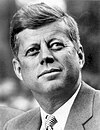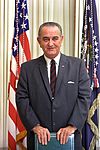C. Douglas Dillon
C. Douglas Dillon | |
|---|---|
James C. Dunn | |
| Succeeded by | Amory Houghton |
| Personal details | |
| Born | Clarence Douglass Dillon August 21, 1909 Geneva, Switzerland |
| Died | January 10, 2003 (aged 93) New York City, New York, U.S. |
| Political party | Republican |
| Spouses | Phyllis Chess Ellsworth
(m. 1931; died 1982)Susan Sage
(m. 1983) |
| Children | 2, including Joan |
| Parent(s) | Clarence Dillon Anne McEldin (née Douglass) |
| Education | Groton School |
| Alma mater | Harvard College (BA) |
| Signature | |
| Military service | |
| Allegiance | |
| Branch/service | |
| Rank | |
| Battles/wars | World War II |
| [2] | |
Clarence Douglas Dillon (born Clarence Douglass Dillon; August 21, 1909 – January 10, 2003) was an American diplomat and politician, who served as
Early life
Dillon was born on August 21, 1909, in
Dillon began his education at Pine Lodge School in
Career
In 1938, he became
Political career
Dillon had been active in Republican politics since 1934. He worked for
President Eisenhower appointed him
Secretary of the Treasury
In 1961, John F. Kennedy, appointed Republican Dillon Treasury Secretary. Dillon remained Treasury Secretary under President Lyndon B. Johnson until 1965. According to Richard Dean Burns and Joseph M. Siracusa, Dillon's leadership of the economic policy team, exerted significant conservative influence on the overall direction of the administration. He effectively convinced the president that the nation's main economic challenge was the balance of payments deficit, leading to the adoption of a moderate approach and the dismissal of more radical liberal solutions to domestic issues. President Kennedy's choice of Dillon as Secretary of the Treasury reflected a deep concern about the balance of payments deficit and the resulting "gold drain." By choosing Dillon, a Wall Street figure with strong Republican connections and a reputation for advocating sound monetary policies, Kennedy aimed to reassure the financial community, which was apprehensive about the potential loose monetary policies of the incoming Democratic administration. According to Theodore Sorensen, the president's choice was primarily influenced by the need to maintain global confidence in the dollar and prevent a massive conversion of dollars into gold. Kennedy shared Dillon's moderately conservative economic perspectives at the time of his appointment, and Dillon enjoyed close access to the president throughout his presidency. He was one of the few political associates who socialized with Kennedy as well. The emphasis placed by Kennedy and Dillon on addressing the balance of payments issue had a substantial impact on the administration's overall economic policy, steering it toward conservatism. The growing annual deficits in dollar payments had led to a significant accumulation of dollars in the hands of foreign banks and governments. The recurring loss of confidence in the value of the dollar prompted foreign holders to exchange their dollars for American gold, which had a fixed value relative to the dollar. This "gold drain" raised concerns within the financial community and remained a prominent issue during both the Kennedy and Johnson administrations. In an effort to stabilize the status of the dollar and halt the outflow of gold, the Kennedy administration avoided economic measures that could potentially increase inflation and undermine foreign confidence in the dollar. During the initial years of Kennedy's presidency, Dillon's success in prioritizing the payments deficit prevented more aggressive fiscal and monetary interventions in the economy or increased spending on social programs.[8]
On tariff policy, Dillon proposed the fifth round of tariff negotiations under the

Dillon supervised the development of a reform package. He made a case before Congress to withhold taxes on interest and dividend income. The goal was to combat widespread tax evasion. Additionally, he advocated for the closure of loopholes utilized by foreign "tax haven" corporations and businessmen who deducted entertainment expenses. Although Congress rejected most of the administration's reform program during the summer of 1962, Dillon nevertheless endorsed the final package because it included a 7 percent investment tax credit.[10]
Kennedy also made use of Dillon's diplomatic skills. He was made the leader of the American delegation dispatched to Punta del Este, Uruguay, in August 1961 to commence the Alliance for Progress. Dillon committed the U.S. to provide $20 billion in low-interest loans over the next decade to enhance the living conditions in Latin America. He endorsed the "revolution of rising expectations" and aimed to convert it into a "revolution of rising satisfactions." Additionally, Dillon served on the National Security Council and actively participated in the intense discussions surrounding the Cuban Missile Crisis in October 1962.[10][11]
Philanthropy
A close friend of
Metropolitan Museum of Art
With his first wife, Dillon collected
He received the Medal of Freedom in 1989.
Personal life
On March 10, 1931, Dillon married the former Phyllis Chess Ellsworth (1910–1982)
- Phyllis Ellsworth Dillon Collins
- Joan Douglas Dillon (b. 1935), former president of French Bordeaux wine company Domaine Clarence Dillon.
In 1983, the widowed Dillon married the former Susan "Suzzie" Slater (1917–2019). She had first been married to Theodore "Ted" Sheldon Bassett (1911–1983) in 1939 (div.). In 1949 she married British entertainer Jack Buchanan (1891–1957). In 1961 she wed DeWitt Linn Sage (1905–1982), who again left her a widow.
Dillon died of natural causes on January 10, 2003, at the
Descendants
Through his daughter Joan's first marriage, he was a grandfather of Joan Dillon Moseley (b. 1954), and through her second marriage to Prince Charles of Luxembourg,[15] he was a grandfather to Princess Charlotte (b. 1967) and Prince Robert (b. 1968) followed. After Prince Charles' death in 1977, Joan married Philippe, 8th duc de Mouchy in 1978, without further issue.[16]
In fiction
In the
See also
- List of U.S. political appointments that crossed party lines
- Rockefeller Foundation
- Metropolitan Museum
References
- Notes
- ^ Phyllis was born in South Bend, St. Joseph County, Indiana on August 3, 1910, and died in New York City, New York on June 20, 1982.
- Sources
- ^ "National Archives Catalog. Dillon, C. Douglas (Clarence Douglas), 1909-2003. Person Authority Record". National Archives. Retrieved May 1, 2020.
- ^ a b c "C. Douglas Dillon, former Treasury secretary and Harvard overseer, dies at 93". Harvard Gazette. Harvard University news office. January 16, 2003. Archived from the original on 2003-03-13. Retrieved 2009-03-27.
- ^ a b c d e Eric Pace (January 12, 2003). "C. Douglas Dillon Dies at 93; Was in Kennedy Cabinet". The New York Times. Retrieved 2009-03-27.
- . Accessed 2009-03-27. Document Number: K2875000085
- ^ "Media Center: Harvard Crimson Football All-Time Letterwinners - Harvard". Archived from the original on 2019-10-23. Retrieved 2017-01-24.
- ^ "C. Douglas Dillon". John F. Kennedy Presidential Library. Archived from the original on 2012-06-26. Retrieved 2008-10-28.
- ^ "Nation: Cabinet Making," TIME, October 25, 1968.
- ^ Richard Dean Burns and Joseph M. Siracusa, Historical Dictionary of the Kennedy-Johnson Era ( Rowman & Littlefield, 2015) pp. 118-119.
- ISBN 080784764X.
- ^ a b Burns and Siracusa, Historical Dictionary of the Kennedy-Johnson Era (2015) pp. 118-119.
- ^ C. Douglas Dillon, "Alliance for Progress, A Program for the Peoples of the Americas." The Department of State Bulletin 45 (1961): 355-360.
- The Metropolitan Museum of Art. Retrieved 5 August 2014.
- ^ a b Jackson, Harold (24 January 2003). "Douglas Dillon | The Republican behind JFK's economic boom". The Guardian. Retrieved 9 March 2018.
- ^ Timothy Edward Howard, History of St Joseph County, Indiana, vol II (1907), pp. 886–887
- ^ "Mrs. Joan Dillon Betrothed to Prince; She Will Be Wed in Spring to Charles of Luxembourg". The New York Times. 11 February 1967. Retrieved 22 July 2020.
- ISBN 978-3-7980-0841-0.
Further reading
- Aldous, Richard. The Dillon Era: Douglas Dillon in the Eisenhower, Kennedy, and Johnson Administrations (McGill-Queen's University Press, 2023).
- Basha i Novosejt, Aurélie. "C. Douglas Dillon, President Kennedy's Economic Envoy." The International History Review 40.2 (2018): 231-252. online
- Eichengreen, Barry. "From Benign Neglect to Malignant Preoccupation: U.S. Balance-of-Payments Policy in the 1960s" in George Perry and James Tobin, eds., Economic Events, Ideas and Policies: The 1960s and After (The Brookings Institution, 2000).
- Gavin, Francis J. Gold, Dollars and Power: The Politics of International Monetary Relations (U of North Carolina Press, 2004).
- Heller, Deane.The Kennedy Cabinet: America's Men of Destiny (1961)
- Katz, Bernard S.and C. Daniel Vencill. Biographical Dictionary of the United States Secretaries of the Treasury, 1789–1995 (1996)
- Lichtenstein, Nelson, ed., Political Profiles: The Johnson Years (1976)
- Perez, Robert C.and Edward F. Willett., Clarence Dillon: A Wall Street Enigma (1995), a biography of Dillon's father.
- Schoenebaum, Eleanora W. ed. Political Profiles: The Eisenhower Years (1977)
- Siracusa, Joseph M. ed., Presidential Profiles: The Kennedy Years (2004)
- Robert Sobel, The Life and Times of Dillon Read (1991), a study of the investment bank





